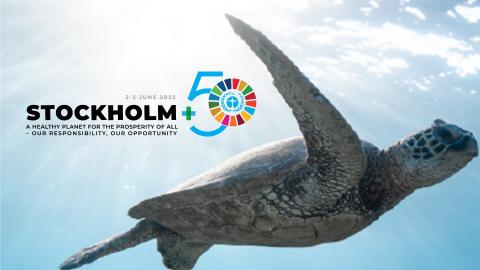
To commemorate the 50th anniversary of the groundbreaking UN Conference on the Environment in Stockholm in 1972, national delegations returned to Stockholm on June 2-3, 2022, to take measure of progress.This article was published in the July-August 2022 issue of NewNotes.
There has been progress since the UN Conference on the Environment in Stockholm in 1972, in the form of treaties and conventions. Some examples in the 1970s and 1980s, known as Multilateral Environmental Agreements (MEAs), are on Trade in Endangered Species and Protection of the Ozone Layer.
Then, in 1992, the famous Rio Summit took place, which ushered in three conventions: on Climate Change (often referred to as the COP climate conferences), on Biological Diversity and to Combat Desertification.
In the 2000s, two conventions were approved: on Persistent Organic Pollutants, and on Mercury.
The Stockholm Conference of 1972 also led to the establishment of the UN Environment Program, which in turn has created two important scientific bodies researching and advising on environmental issues. This year, the UN Environment Assembly (UNEA) has established a third body, a science-policy panel on chemicals.
Three important environmental principles arose from the original Stockholm Conference: the “precautionary principle” which states that action should be taken even without full scientific consensus; the “additionality principle” which recognizes that developing nations need additional technical and financial resources; and the “polluter-pays principle” which is now included in numerous international agreements.
The 2012 Stockholm Conference, also known as the Earth Summit, officially recognized the need to include Indigenous Peoples and Women, added Water and Sanitation as concerns, and called for the establishment of the Sustainable Development Goals in 2015.
The connection between development, eradication of poverty and protection of the environment was already acknowledged in 1972 but the Earth Summit gave full impetus to the link between these three goals.
The Conference this June came up with ten key recommendations, including placing human well-being at the center of a healthy planet, recognizing the right to a clean, healthy and sustainable environment (this is also a resolution for the General Assembly to adopt this year), promoting a circular economy, accelerating the transformation through global cooperation.
This conference also recognized the importance of youth participation and noted new environmental challenges, such as the need for a new plastics convention and for an agreement on protecting marine biodiversity.
